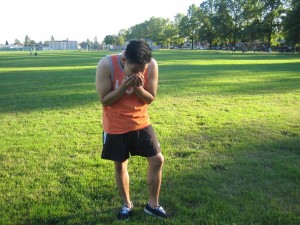Milia are small white bumps that develop across the nose of the baby, chin or cheeks, usually among newborns but it can also develop at any age. They are dead skin cells that are trapped below the surface of the skin and form small and hard cysts.
[youtube url=”https://www.youtube.com/watch?v=efue2sR3lug”]Adults can develop secondary milia in which burns and rashes causes the skin to develop blisters and damage the pore lining.
Symptoms of milia
- Sometimes, bumps can develop on the gums of the baby or the roof of the mouth which are called as Epstein pearls.
- Development of baby acne which is characterized by small red bumps and pustules on the chin, cheeks and forehead which can develop with or without milia.
Milia are small white bumps that develop across the nose of the baby, chin or cheeks, usually among newborns but it can also develop at any age.
If the symptoms still persist for more than 3 months, it is vital to seek medical help immediately.
Treatment
- Keep the face clean by washing at least once everyday, while teenagers and adults should wash their face 2 times every day. Use warm water to relax the pores.
- Use an exfoliating moisturizer to lessen the dead cell accumulation below the skin and eliminate dead cells that have already accumulated. Use a moisturizer that contains Vitamin A.
- Apply salicylic acid on the milia at least once every day until they disappear.
- Use retinol which is used to treat acne and the signs of aging. It also exfoliates and makes the skin soft and clear. Apply a small drop of retinol on the affected area every other night. First, wash the face and pat dry with a towel and wait for at least 30 minutes before applying retinol on the milia. Avoid applying retinol on the upper eyelid to prevent getting into the eyes that can worsen the condition.
- Avoid exposure to sunlight, if suffering from secondary milia. Exposure to sunlight causes blistering of the skin. When going outside, wear a hat to protect the face and apply sunblock that does not contain oils.
- Avoid covering the milia with heavy cosmetics and creams to prevent the accumulation of dirt on the face.
- Avoid scratching the affected area to prevent pain and damaging the skin.
